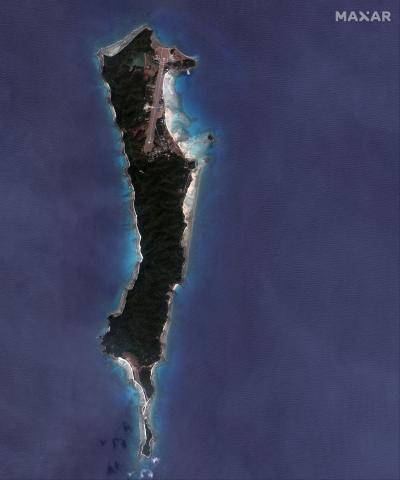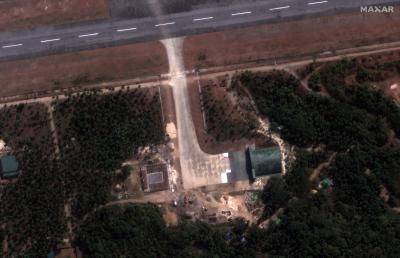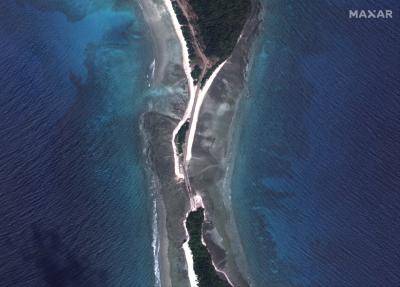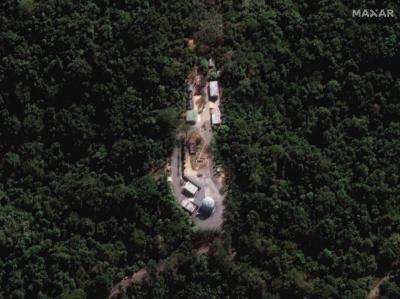FOOLS_NIGHTMARE
ELITE MEMBER

- Joined
- Sep 26, 2018
- Messages
- 18,062
- Reaction score
- 12
- Country
- Location
Myanmar has denied any military facilities built by China on Great Coco Islands, situated near Andamans. But the denial can be taken seriously only when Indian inspectors are allowed to visit the area

The recent revelation by British think tank Chatham House has created ripples in the Bay of Bengal. The reported discovery through satellite images of a new expanded runway and aircraft hangars along with surveillance facilities on the Great Coco islands were probably known to the Indian security establishment, and hence the Myanmar military junta, known as Tatmadaw, was warned that any such military infrastructure would not be taken lightly.
During the civilian National League for Democracy regime led by Aung San Suu Kyi, India had tried to get closer to the Myanmar military, which resulted in the country accepting Indian Kilo class submarine, which was inducted into the Myanmar Navy in December 2020. As India hoped to develop closer military ties with Myanmar, it raised hackles in the Chinese security establishment. The operation of a submarine is a complex process, which leads to dependence on its source country. However, this prized gift from India could not dissuade Myanmar military junta from secretly offering base facilities on its Great Coco Group of Islands to the Chinese, which first raised concerns in the Indian strategic circles during the nineties when there were reports of China setting up radar facility. The then military rulers probably heeded India’s warnings, and assured Indian interlocutors that the country would not allow its islands to be used against Indian security interests. In fact, Indian naval observers were allowed to visit Myanmar to see for themselves if there were any naval surveillance facility worth the name. The Chinese designs were then thwarted by India. However, the Chinese seem to have revived the idea of restoring the Great Coco islands as a spy base, along with Little Coco Islands as its military outpost right on the mouth of Indian maritime waters, near the Andaman sea.
When Indian officials confronted the Myanmar regime with the satellite pictures of new infrastructure coming up on the Great Coco Islands, situated only 45 kms away from last Indian island of Andaman and Nicobar chain, they flatly denied any such development being undertaken by the Chinese. This denial can be taken seriously only when Indian inspectors are allowed to visit the Coco group of Islands, as done earlier in the beginning of this century.
ALSO READ | Where India Stands In World Arms Bazaar As Defence Exports Reach All-Time High And $100 Bn Orders Likely In Next Decade
How Feb 2021 Takeover Of Myanmar By Military Junta Helped China
Recent developments on the Great Coco Islands can definitely be attributed to the military takeover of Myanmar. The February 2021 coup in Naypyidaw has come as a boon for China. The ruling National League For Democracy was proving to be a big obstruction in Chinese strategic ambitions to lay a strategic siege around the Bay of Bengal to observe and restrict Indian military activities. The dethronement of democracy leader Aung San Suu Kyi by Commander in Chief of defence forces Min Aung Hlaing has enabled the Chinese military to tighten their grip over the military junta, which is facing huge rebellion from the masses.The brutal way of dealing with the anti-government agitationists has attracted widespread condemnation, which has led to its worldwide isolation and resulted in its over-dependence on Chinese military and economic support. In fact, there is a perception in the strategic circles that the military coup was engineered on the Chinese provocation and backing, as the military leaders of the Buddhist country would be easy to manipulate for its foreign and security policy. The Aung San Suu Kyi regime was proving to be unhelpful in the Chinese design to mark its presence in the Bay of Bengal region to keep an eye over Indian military activities. In fact, during Aung San regime, India and Myanmar developed strong bonds, though the Myanmar leader was cautious in getting too close to India in order not to antagonise its giant neighbour. However, many of Chinese big-ticket projects in Myanmar were either cancelled or kept under abeyance because her regime heeded the demands of local people opposing Chinse projects. Now, the Myanmar military requires weapons to crush the rebellion in the country, and the Chinese are happily extending such support in lieu of raw materials.
Over last two years, much water has flown in the river Irrawaddy as the Chinese have tightened its stranglehold over the Myanmar military junta. In the background of international outrage against the air attack on the Burmese protesters, the survival of military junta depends on Chinese backing. The entire world condemned the air action but the Chinese government kept mum.
ALSO READ | Why Self-Reliance In Defence Is A Strategic Imperative For India Now
Strategic Importance Of Great Coco Islands Near Andaman
The photographs of fresh construction images, relevant for current and future military operations, released by satellite imagery company Maxar Technologies has drawn the attention of western and Indian strategic community as the new extended 2,300-metre runway, suitable for fighter operations on the southern tip of Great Coco will facilitate a strong foothold for the Chinese military. Though the Myanmar authorities deny any Chinese presence on the Coco islands, situated on the tip of Andaman group of Islands, military analysts observe that such facility can only be built by China, as Myanmar military would not be requiring a close observation of Indian missile tests in the maritime region or any Indian naval activities. China also has an enduring interest in accessing the Indian Ocean through the China Myanmar economic corridor in order to bypass Malacca Strait. The corridor will enable China to get a land route shipping and direct energy imports into China’s fast emerging Yunnan province as an economic hub, adjoining Myanmar. In fact, the Chinese wanted to connect this economic corridor with proposed Bangladesh-China-India-Myanmar economic corridor (BCIM), which could not take off because India did not show any interest. Chinese companies are presently engaged in big infrastructure projects, such as deepwater ports, basically to facilitate movement of large Chinese ships. The Myanmar military is compelled to provide security to these facilities.According to British think tank Chatham House, the base, which Myanmar authorities have described it as their own facility developed by them, contains additional new structures like two new hangars, a new causeway, an accommodation bloc, a radar station in addition to a renovated runway earlier referred to as 1,300 metres long. The satellite imagery has also revealed that further land clearing work is going on, which indicates that new structures are to be constructed. The runway has also been widened to enable big transport aircraft to land.
The military facilities on Great Coco Island situated in the Bay of Bengal has serious strategic implications in the region as India intends to counter growing Chinese presence and influence in South Asian and Indian Ocean regions. The naval base will pose significant security challenge to India and its navy. The deep sea port on Myanmar coast, being built by the Chinese, will naturally host Chinese commercial ships, which can bypass Malacca Strait. The Myanmar port will prove to be a cheaper commercial and strategic alternative for China, and hence China’s deep interest in keeping Myanmar under military rule to promote its strategic and economic interests.
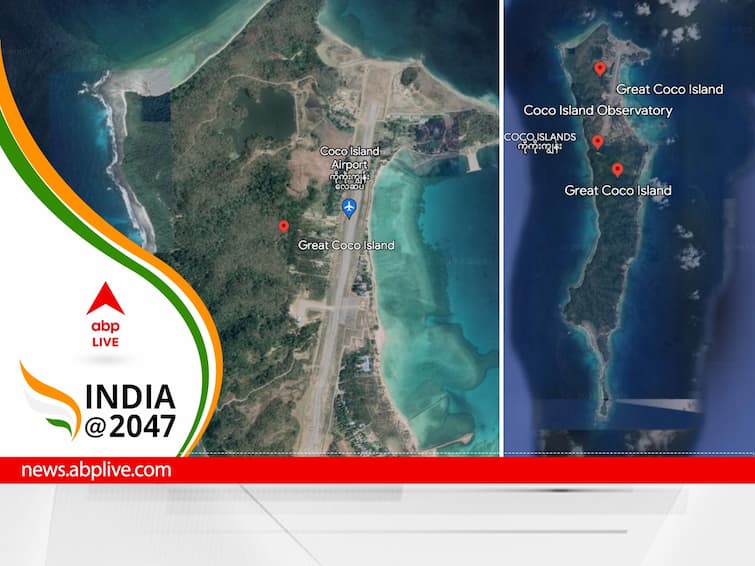
Is China Building 'Spy Base' Near Andamans? New Military Infra On Coco Islands And What It Mean
Myanmar has denied any military facilities built by China on Great Coco Islands, situated near Andamans. But the denial can be taken seriously only when Indian inspectors are allowed to visit the area


